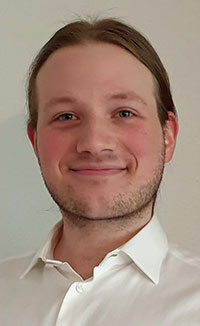 Simon Josef Linhart. Faculty of Biology, Ludwig-Maximilians-Universität München (LMU Munich), Großhaderner Str. 2, 82152 Planegg-Martinsried, Germany. S.Linhart@campus.lmu.de
Simon Josef Linhart. Faculty of Biology, Ludwig-Maximilians-Universität München (LMU Munich), Großhaderner Str. 2, 82152 Planegg-Martinsried, Germany. S.Linhart@campus.lmu.de
Simon Linhart was born in 1998. He studied biology at the Ludwig-Maximilians-Universität München (LMU Munich) and completed his bachelor's degree on the evolution of arthropod diversity. He continued his studies at the LMU in the Master's program of Evolution, Ecology and Systematics, participating in different projects of the Palaeo-Evo-Devo research group under the supervision of Joachim T. Haug. He contributed to projects on different ingroups of Neuroptera. By applying digital microscopy and image processing in combination with the usage of Elliptic Fourier Analysis for the quantification of morphology, he studied the evolution of larval diversity over time. Recently, he did a project on larvae of the beetle group Haliplidae. He is currently completing his Master's thesis about the evolution of larvae of the entire group of Neuropteriformia (e.g., beetles, lacewings) over time. The research focuses on the comparison between fossil specimens, mainly preserved in amber, and their extant counterparts. He has participated in online conferences of the German Palaeontological Society (PalGes) and the German Zoological Society (DZG) during the COVID-19 pandemic. In the upcoming conference of the PalGes in fall 2023, he will present the results of his Master's thesis.
![]()
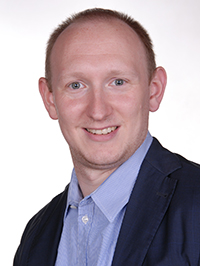 Patrick Müller. Friedhofstr. 9, 66894 Käshofen, Germany. pat14789@web.de
Patrick Müller. Friedhofstr. 9, 66894 Käshofen, Germany. pat14789@web.de
Patrick Müller was born on July 14, 1989 in Zweibrücken (Germany). He studied financial economics and is a passionate private collector of amber inclusions. His collection focus is on amber from Myanmar with about 15,000 amber pieces. More than 100 new species in Myanmar amber from his collection have already been scientifically described. Patrick has to date already been involved in about 30 papers on inclusions in Myanmar amber.
![]()
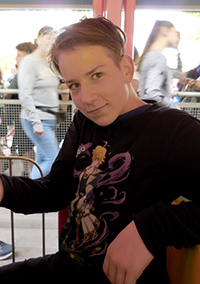 Gideon T. Haug. Ludwig-Maximilians-Universität München, Biocenter, Großhaderner Str. 2, 82152 Planegg-Martinsried, Germany. gideon.haug@palaeo-evo-devo.info
Gideon T. Haug. Ludwig-Maximilians-Universität München, Biocenter, Großhaderner Str. 2, 82152 Planegg-Martinsried, Germany. gideon.haug@palaeo-evo-devo.info
Gideon T. Haug is a high-school student, but became interested in biology due to the work of his parents and travelling with them to museum collections. He did first smaller projects when his parents were working at the Yale Peabody Museum, New Haven. He presented his first achievements on a German conference in 2012 when the Haug family was based at the University of Greifswald. Since the family moved to the Ludwig-Maximilians-Universität München (LMU Munich) in autumn 2013, he presented further posters on various zoological and palaeontological conferences. Gideon gave his first oral presentation on his work on lacewing larvae in autumn 2019 and co-authored the first paper in 2020. He is skilled in digital microscopy, image processing, digital drawing and 3D modelling. So far he has worked on extant larvae of mantis shrimps and different fossil insects and shrimps.
![]()
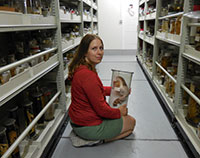 Carolin Haug. Ludwig-Maximilians-Universität München, Biocenter, Großhaderner Str. 2, 82152 Planegg-Martinsried, Germany and GeoBio-Center at LMU, Richard-Wagner-Str. 10, 80333 München, Germany. carolin.haug@palaeo-evo-devo.info
Carolin Haug. Ludwig-Maximilians-Universität München, Biocenter, Großhaderner Str. 2, 82152 Planegg-Martinsried, Germany and GeoBio-Center at LMU, Richard-Wagner-Str. 10, 80333 München, Germany. carolin.haug@palaeo-evo-devo.info
Carolin Haug studied biology at the Julius-Maximilians-Universität Würzburg with animal ecology as major subject and sociobiology and palaeontology as minor subjects. She received her Diplom in 2005 and moved to the University of Ulm for her Ph.D. thesis. In the work group Biosystematic Documentation she investigated the ontogeny and evolution of the arthropod head shield on a wide spectrum of fossil and extant specimens. Due to the very different demands of the material, she developed new imaging techniques or modified existing methods together with her collaborators, for example, composite imaging, stereo photography or autofluorescence macro- and microscopy. In 2011, Carolin defended her Ph.D. thesis. She was a postdoctoral researcher at Yale University and at the Ernst-Moritz-Arndt-Universität Greifswald. Besides optimising imaging techniques, she is interested in fossilised development (see also http://www.palaeo-evo-devo.info) and in the evolution of tagmosis. For this purpose, she investigates mainly arthropods from different deposits yielding exceptional preservation, such as Rhynie chert, Solnhofen Lithographic Limestones, the 'Orsten', Burgess Shale, or Mazon Creek, always in comparison to their extant relatives. Carolin moved to Munich in 2013 to continue her research there at the Ludwig-Maximilians-Universität.
![]()
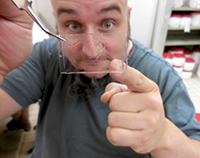 Joachim T. Haug. Ludwig-Maximilians-Universität München, Biocenter, Großhaderner Str. 2, 82152 Planegg-Martinsried, Germany and GeoBio-Center at LMU, Richard-Wagner-Str. 10, 80333 München, Germany. joachim.haug@palaeo-evo-devo.info
Joachim T. Haug. Ludwig-Maximilians-Universität München, Biocenter, Großhaderner Str. 2, 82152 Planegg-Martinsried, Germany and GeoBio-Center at LMU, Richard-Wagner-Str. 10, 80333 München, Germany. joachim.haug@palaeo-evo-devo.info
Joachim T. Haug studied animal ecology (major), sociobiology and palaeontology (minors) at the Julius-Maximilians-Universität Würzburg. After the receipt of the Diplom in 2005, he moved to the work group Biosystematic Documentation at the University of Ulm for his PhD thesis. There he worked on the early crustaceans from the Cambrian 'Orsten', which are preserved three-dimensionally and with minute details. To make the entire morphology clearly visible, Joachim produced computer-based 3D models for each developmental stage of a species, resulting in a 4D model of the species. With 4D models reconstructed for the different species, differences in the developmental pattern between the species became visible. These changes in the developmental timing, so-called heterochronic events must have occurred several times during early crustacean evolution. Due to these findings, Joachim got interested in studying such evolutionary changes of development also in fossils from other deposits and focussed on Palaeo-Evo-Devo (see also http://www.palaeo-evo-devo.info). After his defense in 2009 and two further years as postdoctoral researcher in Ulm, he received two Feodor Lynen research fellowships from the Alexander von Humboldt-Foundation, with which he was doing research at Yale University and at the Ernst-Moritz-Arndt-Universität Greifswald. Besides 3D modelling, Joachim is also interested in different methods of imaging (documentation and presentation). In September 2013, he relocated to the Ludwig-Maximilians-Universität in Munich. In April 2018 Joachim became a Lichtenberg professor at the Ludwig-Maximilians-Universität München (LMU Munich) funded by the Volkswagen Foundation.

